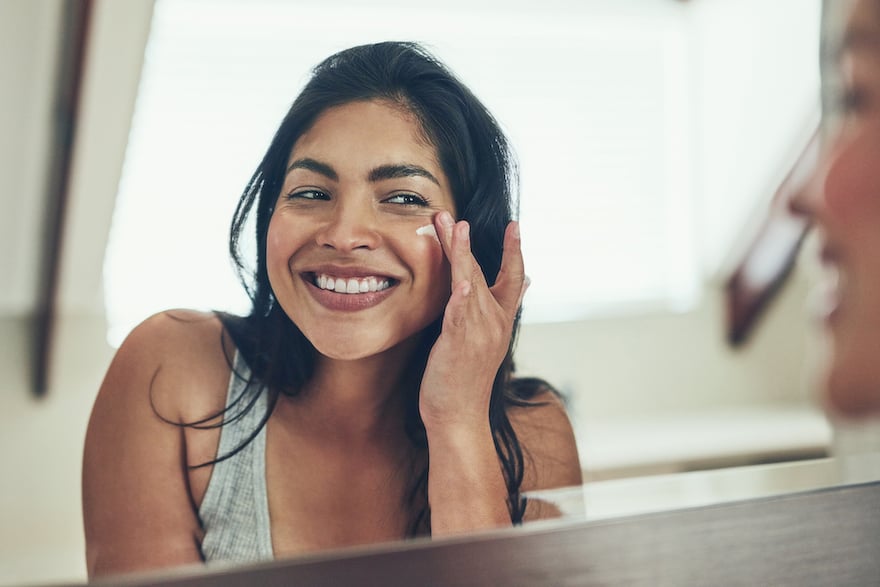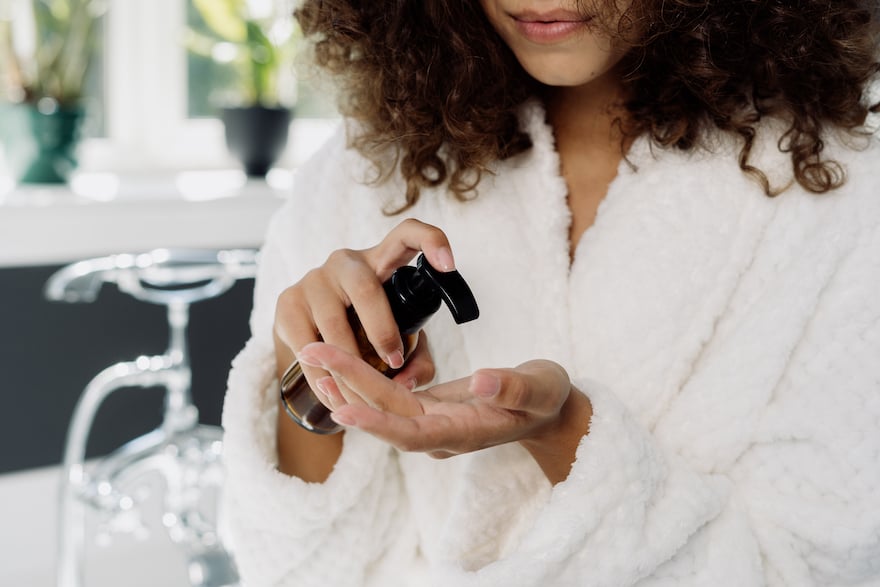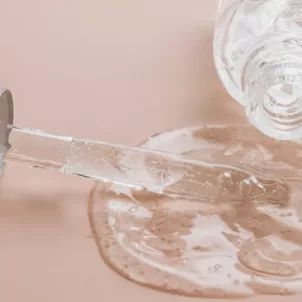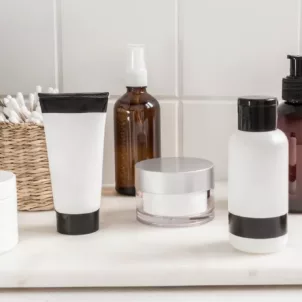In the same way you refresh your wardrobe when the seasons change or you need a change of pace, your skincare can also benefit from an overhaul. Here’s how often you should change your skincare routine to keep your complexion in tip-top shape and exactly how to do it.
Once you find a routine that works for you (whether it’s working out, meal prepping, or committing to a morning ritual), it’s easy to get settled. While routine isn’t a bad thing, it can sometimes lead to a rut. And while getting on a consistent skincare regimen is key for results, you also need to switch it up every once in a while. If you’ve ever wondered how often you should change your skincare routine, there’s no one-size-fits-all answer—but there are a few things to keep in mind.
Ready to get started? Here’s an expert guide on how to change your skincare routine.
Benefits of Changing Your Skincare Routine

Performing a skincare audit means you’re tailoring your routine to your exact needs. It has some serious benefits, which include:
- Clearer complexion
- Healthy skin barrier
- Brighter skin tone
- Hydrated skin
How Often Should You Change Your Skincare Routine?

If you’re wondering when to change your skincare routine, the answer may differ for each person, but there are a few determinants to look out for:
It’s the start of a new season.
“Just as you’d change your wardrobe from summer to winter, skin needs change as well,” says Sarah LaGreca, Director of Education at Origins. Lining up your skincare swap with the change of seasons is one easy way to keep your routine fresh and ensure you’re meeting your skin’s needs. That’s because the difference in temperature and humidity affects our skin. “Often, in the winter, for example, skin may require extra hydration to combat the cold, dry air,” LaGreca says. Consider picking up a heavier, cream-based moisturizer to lock in hydration on the coldest days. In the summer, swap it out for something lighter, like a gel moisturizer to help keep your skin hydrated and balanced—even in the heat.
Your product isn’t meeting your skin goals.
“If your skin doesn’t feel comfortable or you notice it doesn’t look its best, it may be time to switch up your routine,” LaGreca says. If you’re dealing with breakouts, rashes, dry patches, dark spots, or dullness, it may be a sign something needs to change. Often, this can be the result of not buying the right product for your skin type or goals. A dermatologist or esthetician can help you figure out exactly what ingredients will work best for you.
Your routine doesn’t spark joy.
Marie Kondo’s genius logic around decluttering can also apply to skincare. Maybe the scent of your moisturizer is turning you off, you don’t love the texture of a product, or you’re simply ready for a change. That’s ok! While your skincare routine is designed to help you feel good in your skin, it’s also about bringing a moment of calming self-care to your day, so it should leave you smiling, not sour.
How to Do A Skincare Audit

So, how do you change your skincare routine? LaGreca recommends these six steps to editing down and curating the best routine possible.
1. Assess your skin’s current state.
“It’s best to first assess your skin: Is it oily? Dry? Combination?,” LaGreca explains. All of this will determine the products you use. For example, someone with dry skin would benefit from a hydrating face wash while someone with oily skin might prefer a foaming face wash to clear away acne-causing sebum (like Origins Checks and Balances Cleanser). Your skin may change with the seasons, and different stages of life like pregnancy, menopause, or moving to a new city more than you think, so this can be a crucial step. Don’t write yourself off as having “oily,” “dry,” or “breakout-prone” skin for life.
2. Determine your skincare goals.
This could be anything from fading dark spots to reducing fine lines to clearing up breakouts. Your goals will help inform which products to use as well. Those hoping to clear breakouts might look for purifying clay masks (like Origins Clear Improvement Mask) as a final step in their routine while others who are focused on anti-aging might add a serum full of peptides and hydrating ingredients. Pro tip: Origins offers personalized help with this—their guides can recommend a regime based on your needs.
If you’re comfortable with your skincare lineup, consider how you can maximize its performance. “[There are] so many [ways] to get the best out of your skincare routine and help boost benefits of the products you already love,” LaGreca says. “For example, incorporating a weekly exfoliator is essential to slough away dead skin cells to help the rest of your products (serum, moisturizer, etc) work better.”
3. Check those expiration dates.
We’re all guilty of keeping things in our medicine cabinets a little too long, but did you know that skincare products are marked with a shelf-life? Look on the back or bottom of the packaging for a tiny circular jar with a number inside. That’s how long the product is good for. For example, if it says “12M,” that means the product is good for 12 months. If you’ve passed that date with any products, toss them—it’s not worth the risk of irritation or breakouts. Pro tip: Look to see if you can recycle your beauty products before throwing them in the garbage.
4. Re-home your pre-loved products.
For non-expired products that aren’t making you (or your skin) as happy as they once did, find them a new home, whether that’s with a friend with different skincare goals than you, through a site that allows for beauty donations (such as Give & Makeup, Project Beauty Share, or local women’s shelters), or gift them via a Buy Nothing group in your neighborhood.
5. Enlist the help of pros.
If you’re unsure about how to change your skincare routine, consult a board-certified dermatologist. They’re experts in skin and will be able to create a routine personalized to your exact needs. Another option? Take the quiz over at Origins to see which products they recommend for you. Then, head over to HUM Nutrition’s supplement quiz. After answering a few quick questions, you’ll be paired with an RD who can give you personalized recommendations to help your skin glow from the inside out. Commit to your routine for at least three months to see if it’s really working before making changes.
6. Choose your line-up.
Decide How Many Steps You Want to Do
When it comes to skincare routines, consistency is key. Be honest about how much time you’re willing to dedicate to your routine and stick to it. While some people might prefer a 12-step routine, others may only want to deal with five products at a time.
Determine the Holes in Your Routine
Now that you’ve cleaned up your products, you may still be left with a few products you want to keep in rotation. But is there something you’re missing in your lineup? Perhaps you’re missing a target serum that could help eliminate discoloration and dark spots. Or maybe you’re realizing you’d benefit from incorporating a weekly clay mask into your rotation to fight unwelcome breakouts. Determine the products you’re missing so you know exactly what to look for when you go shopping.
Find Your New Products
Now that you’ve got all your information, it’s time to build out your new regimen. Talk to a dermatologist to get specific product recommendations, or talk to a pro at Origins who can help guide you to the right items.
Start Slow
While it may be tempting to completely overhaul your routine and start fresh, it’s best to start slow. Introduce one new product at a time so you can determine whether or not the product is working for you. This is especially important for products with skincare actives, as they can be more intense and can potentially cause a reaction. Space each product out by two weeks—that will give you enough time to check for any negative reactions or to see real results. Plus, it’ll give your skin a chance to get used to the product before introducing something new.









